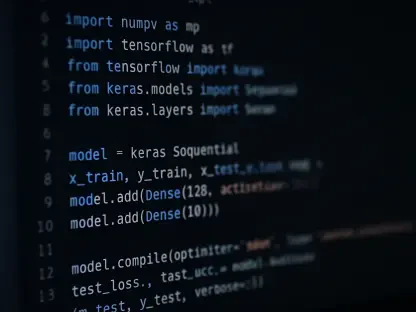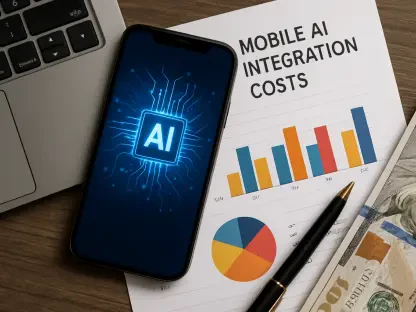The Software as a Service (SaaS) market is growing rapidly, and having the right tools can help you build SaaS without code quickly. As competition increases, finding ways to speed up your launch is important. One practical approach is to create a minimum viable product (MVP) using no-code SaaS platforms. This allows you to test your idea and gather feedback early on, making it easier to refine your offering. In this article, we’ll explore why building a SaaS MVP is essential and how no-code SaaS tools can simplify the process.
1. Conduct Market Analysis & Validation
Before diving into the development of your no-code SaaS MVP, it’s crucial to conduct a thorough market analysis to understand your target audience and market landscape. Start by identifying your target market and understanding their pain points. Research existing competitors, industry trends, and the specific needs of potential customers. This step is vital as it provides insights into the viability of your SaaS product and helps you identify gaps that your solution can fill.
Clearly defining the problem your MVP will address is essential. Determine what makes your idea unique and how it differentiates from existing solutions. Once you have a strong understanding of the market, outline the key features of your MVP. Validate your concept through various means such as surveys, interviews, and discussions with potential users and stakeholders. Gathering feedback at this stage helps refine your idea and ensures that your MVP will resonate with your target audience.
Market analysis and validation form the foundation upon which your SaaS MVP will be built. It helps mitigate risks by providing valuable insights into the market’s demands and preferences. This step also allows you to make data-driven decisions about your product’s development and positioning, increasing the likelihood of success once your MVP is launched.
2. Design Your No Code SaaS MVP
With a validated idea in hand, the next step is to design your no-code SaaS MVP. Begin by solidifying your plan based on the insights gathered during your market analysis. Define the primary purpose of your MVP and what core functions it should include to solve the problem identified. Use no-code design tools to create wireframes or mockups for the user interface. These visual representations will help you visualize the flow and layout of your application, ensuring it is user-friendly and intuitive.
Choosing the right technology stack and tools is crucial for building a robust no-code SaaS MVP. Evaluate different no-code platforms and select one that aligns with your project requirements. Consider factors such as ease of use, scalability, integration capabilities, and support community. Developing a detailed roadmap that outlines milestones, timelines, and key deliverables is essential for keeping the development process on track and ensuring timely execution.
Designing your no-code SaaS MVP is a creative and strategic step that transforms your validated idea into a tangible product blueprint. By focusing on user experience and functionality, you can create an engaging and effective solution that meets the needs of your target audience. A well-designed MVP sets the stage for a smooth development process and increases the chances of a successful launch.
3. Construct Your MVP Using No Code Tools
Now that you have a clear design and a roadmap, it’s time to construct your MVP using no-code tools. Start by setting up an account on your chosen no-code platform. These platforms offer a range of design tools and templates that simplify the process of creating the user interface. Utilize drag-and-drop components to build the interface and structure the database without the need for coding expertise.
Incorporate the core features that are essential to your MVP’s functionality. Connect third-party services or APIs through the platform’s built-in connectors to enhance the capabilities of your SaaS product. Testing is a critical part of the construction phase. Thoroughly test your MVP to ensure all features work as intended and provide a seamless user experience. Identifying and fixing issues at this stage will save time and resources in the long run.
Constructing your MVP using no-code tools is an efficient way to bring your vision to life quickly. These tools empower non-technical individuals to build robust applications, democratizing the development process. By leveraging the capabilities of no-code platforms, you can focus on the strategic aspects of your product while ensuring a functional and user-friendly MVP.
4. Test & Validate Your No Code SaaS MVP
Once your MVP is constructed, the next step is to test and validate it. Engage a small audience in beta testing to collect data on user interaction and identify any issues or areas for improvement. This phase is crucial for understanding how real users engage with your product and gathering actionable feedback. Encourage beta testers to provide honest opinions and suggestions to help refine your MVP.
Based on the feedback received, make necessary modifications and enhancements to address any identified problems. Iterative testing and refinement are essential to ensure that your MVP meets the needs of your target audience. Continue testing until you achieve optimal market fit, where the product effectively addresses the problem and provides a positive user experience.
Testing and validating your no-code SaaS MVP helps you identify potential roadblocks and areas for improvement before a full-scale launch. It allows you to fine-tune your product based on real user feedback, increasing the chances of success. This phase is iterative and may require multiple cycles of testing and refinement to achieve the desired level of quality and functionality.
5. Prepare for Release
With a refined MVP in hand, the next step is to prepare for its release. Develop a comprehensive marketing plan to reach your target audience and generate interest in your product. Utilize various marketing channels such as social media, email campaigns, and content marketing to create awareness and attract potential users. Setting up analytics tools is essential for tracking user behavior, performance, and engagement once your MVP is launched.
Create user guides and support resources to assist customers in navigating your product. Clear and concise documentation helps users understand the features and functionality of your SaaS product, reducing the learning curve. Ensure that your MVP is scalable and robust enough to handle an increasing number of users. This includes optimizing the infrastructure and addressing any potential performance bottlenecks.
Preparing for release involves a combination of strategic marketing efforts and technical readiness. By creating a buzz around your product and ensuring it can handle the anticipated user load, you set the stage for a successful launch. Comprehensive preparation minimizes the risk of post-launch issues and ensures a positive experience for your users.
6. Deploy Your No Code SaaS MVP
Now it’s time for the big moment – deploying your no-code SaaS MVP to a wider audience. Officially launch your MVP and closely monitor user engagement. This is an exciting phase as you see your vision come to life and users start interacting with your product. Pay attention to user feedback and be prepared to address any issues that arise promptly. Providing excellent customer support is crucial during this initial phase to build trust and satisfaction.
Keep an eye on key performance metrics to gauge the success of your launch. Use the data collected to identify trends and areas for improvement. Continuous monitoring allows you to make informed decisions and quickly respond to user needs. Engaging with your user community and soliciting ongoing feedback helps create a sense of connection and loyalty.
Deploying your no-code SaaS MVP is a significant milestone in your product journey. It marks the transition from development to real-world application. A successful launch requires not only technical readiness but also effective user engagement strategies. By staying responsive to user needs and maintaining a high level of support, you can build a strong foundation for your SaaS product’s growth.
7. Post-Launch Improvement
The Software as a Service (SaaS) market is expanding at an impressive rate, making the right tools crucial for swiftly building SaaS solutions without writing code. With increasing competition, it’s vital to find strategies that speed up your launch. One effective method is to develop a minimum viable product (MVP) using no-code SaaS platforms. This approach lets you validate your idea early, obtain valuable feedback, and make necessary adjustments before a full-scale launch.
Building an MVP is essential because it minimizes risk and maximizes learning. By launching a basic version of your product, you can gauge market interest, understand user needs, and identify potential flaws or enhancements. No-code tools make this process easier and more accessible, enabling even those without technical skills to bring their concepts to life swiftly.
In this article, we’ll dive into the significance of creating a SaaS MVP and the advantages of using no-code platforms. We’ll highlight how these tools lower the barrier to entry, allowing entrepreneurs to experiment with their ideas efficiently. By leveraging no-code solutions, you can focus more on your business strategy and less on the technological complexities, positioning yourself well in a competitive market. Whether you’re a startup or an established business looking to innovate, embracing no-code tools for MVP development can be a game-changer, offering speed, flexibility, and cost-effectiveness.









